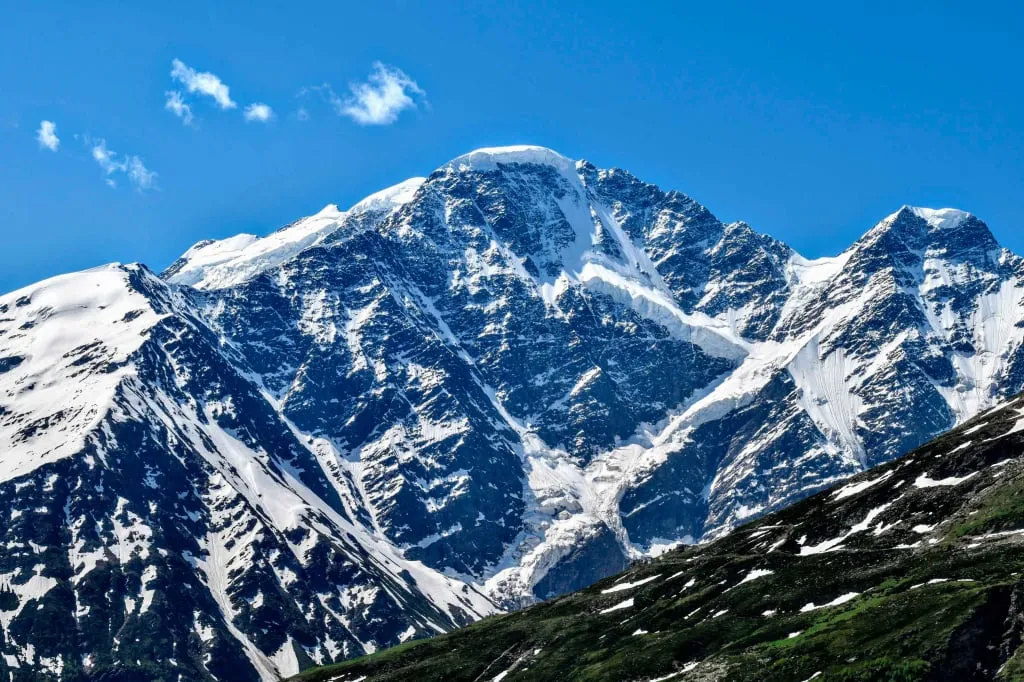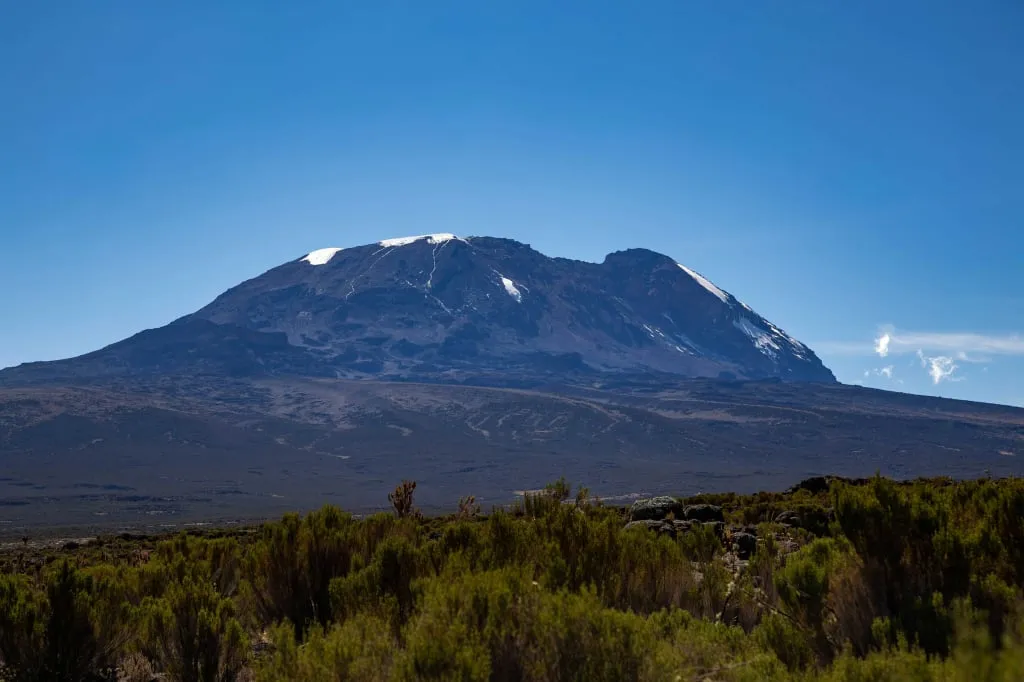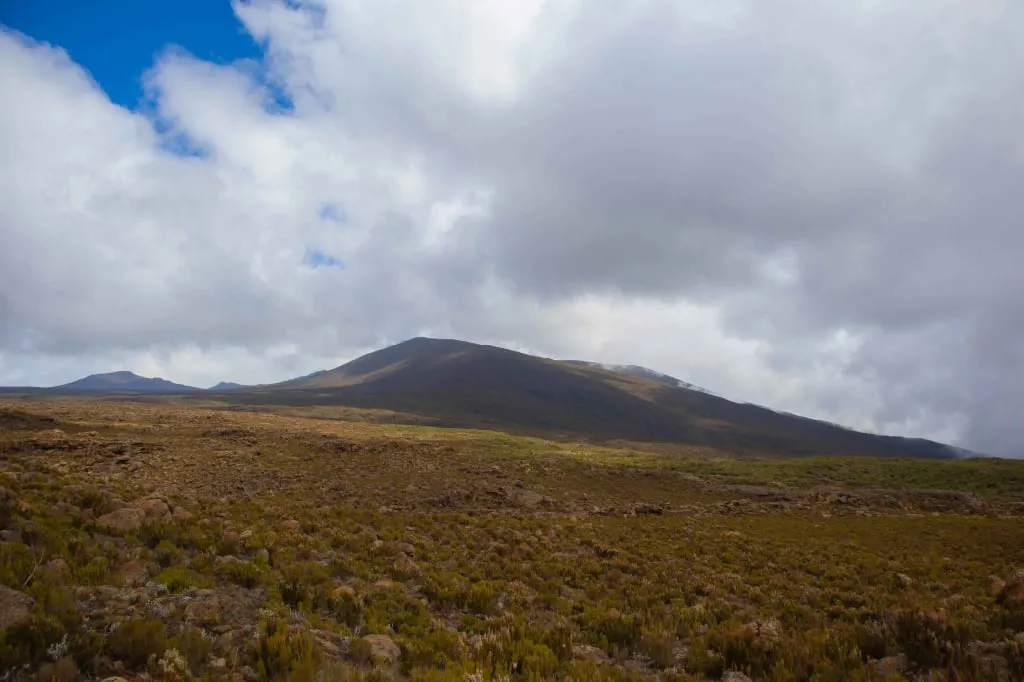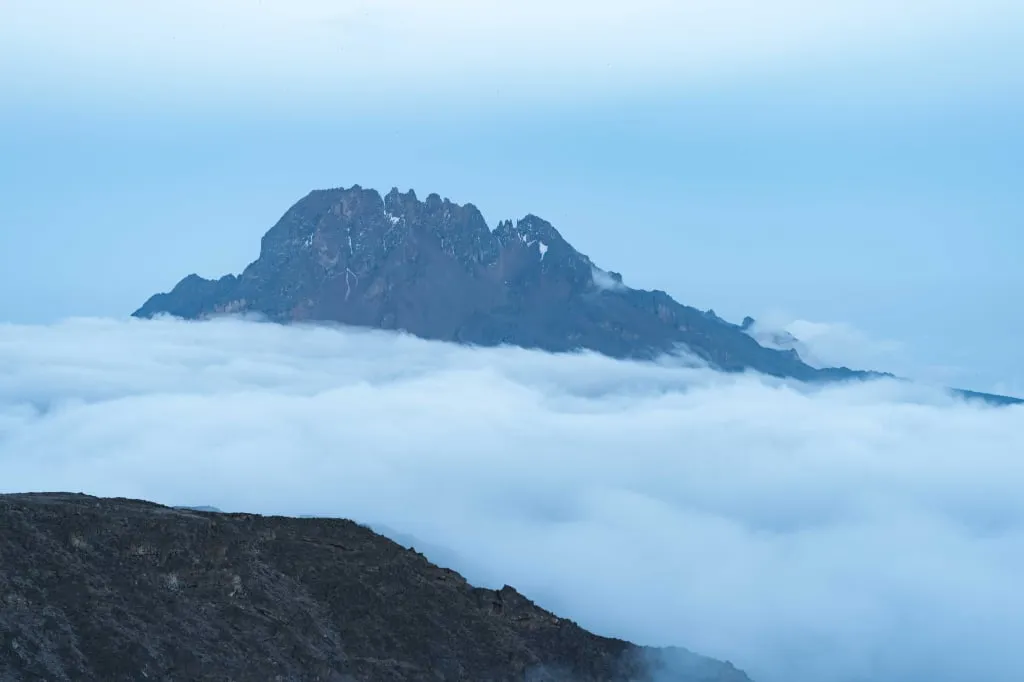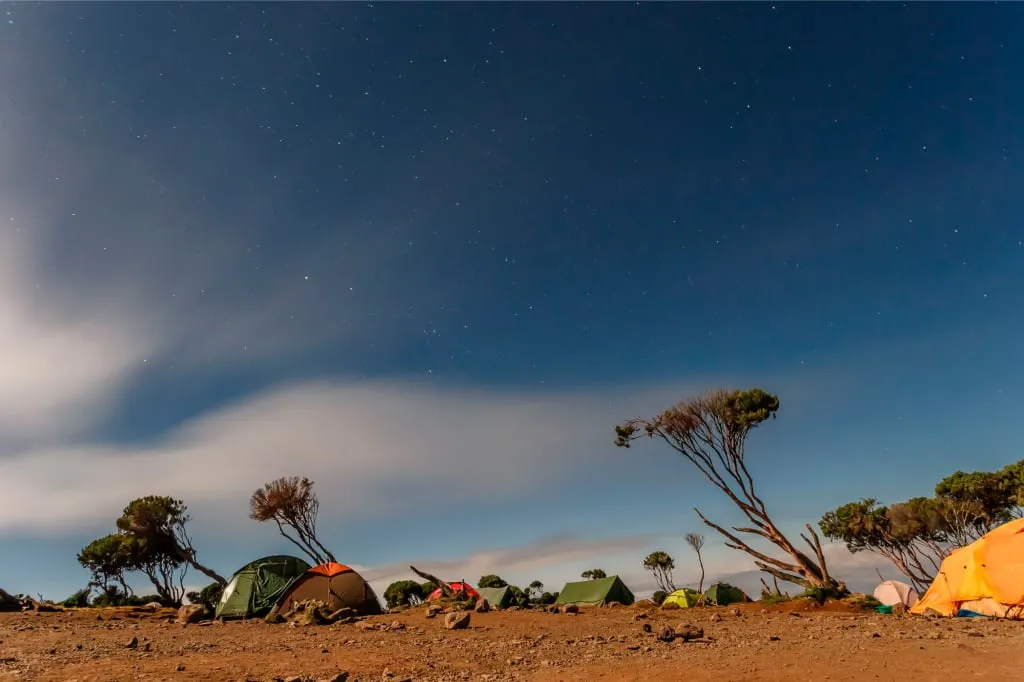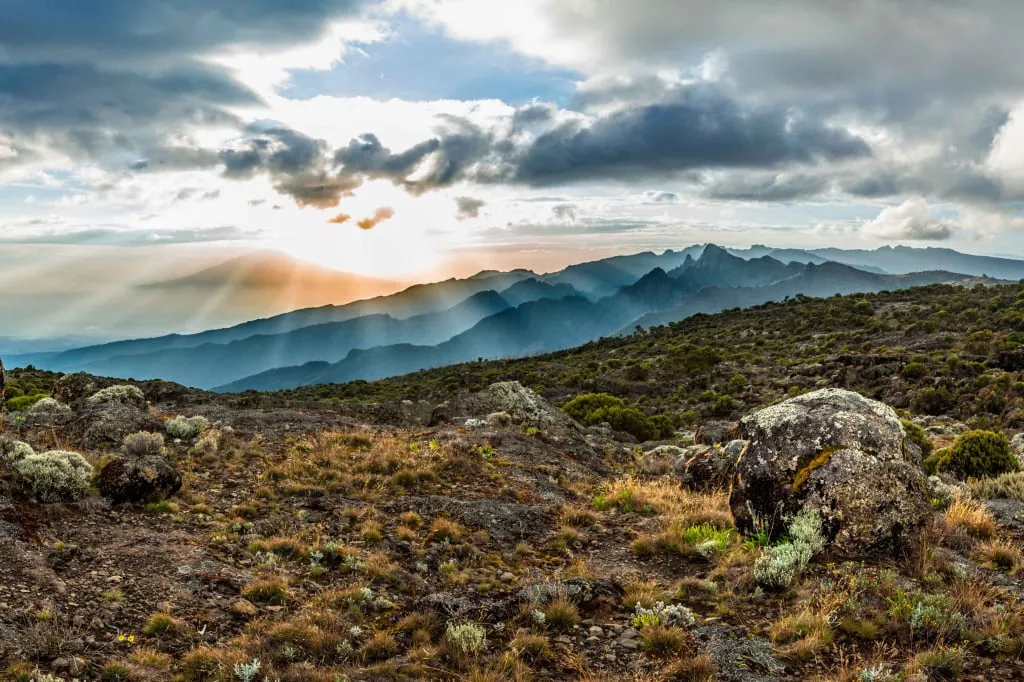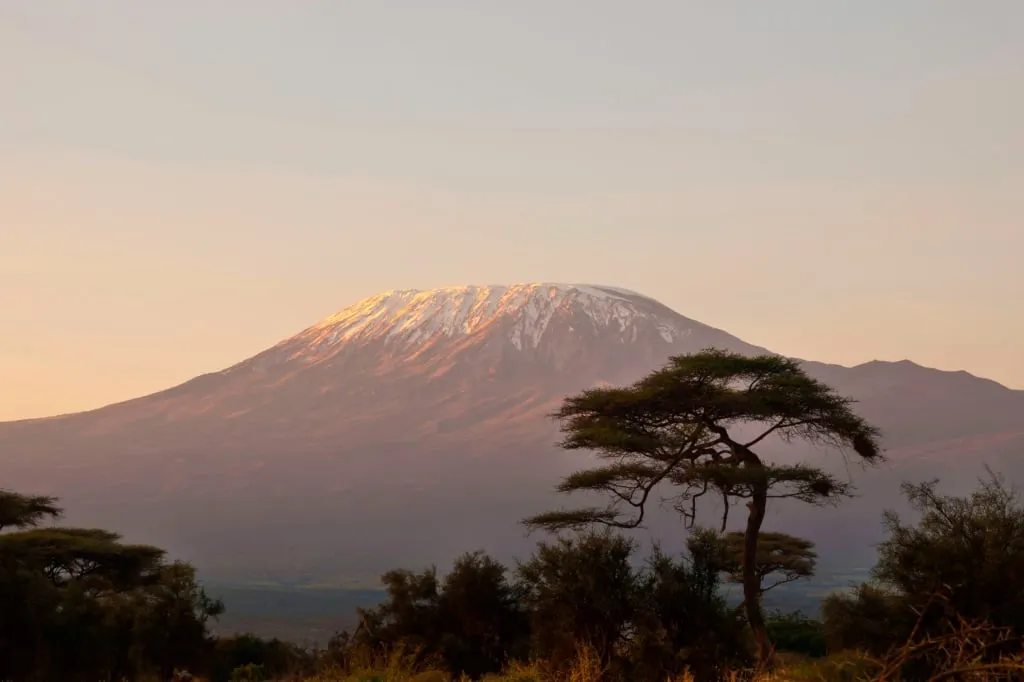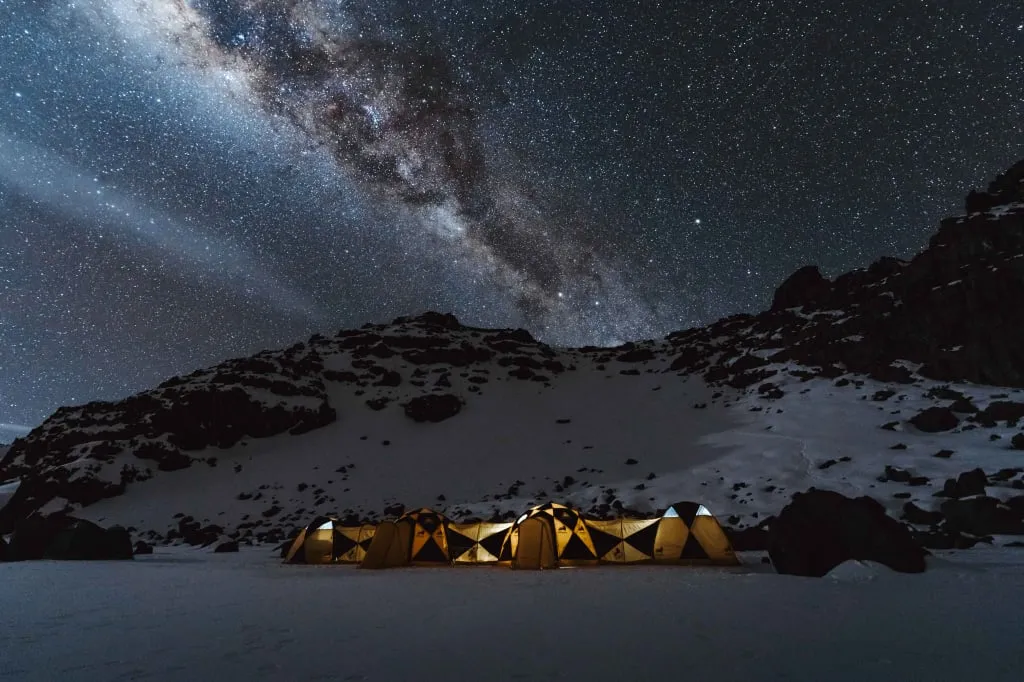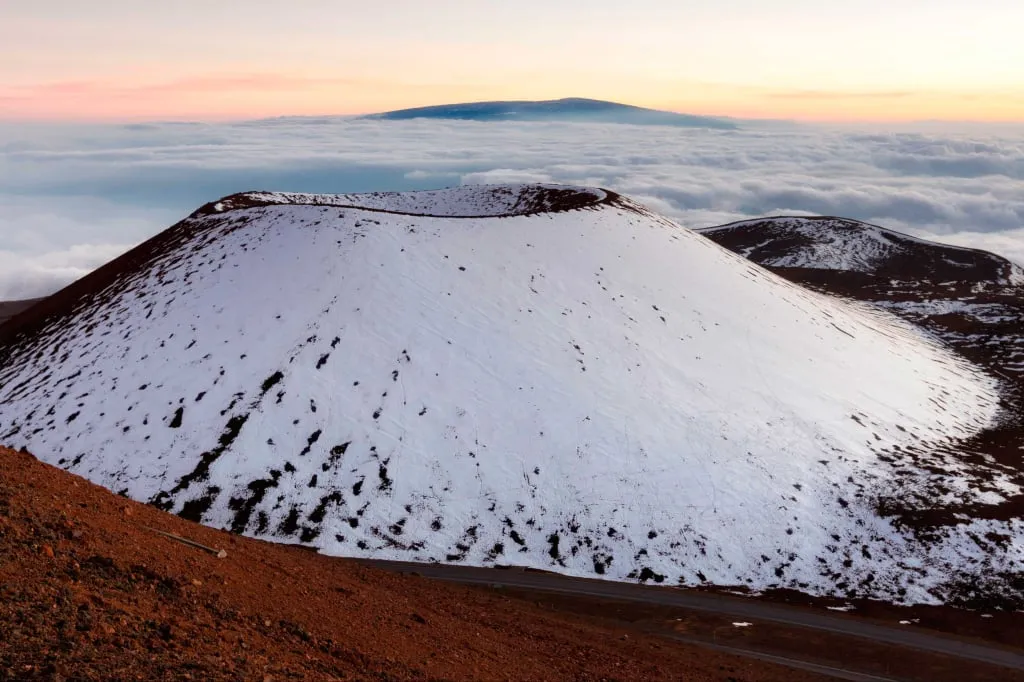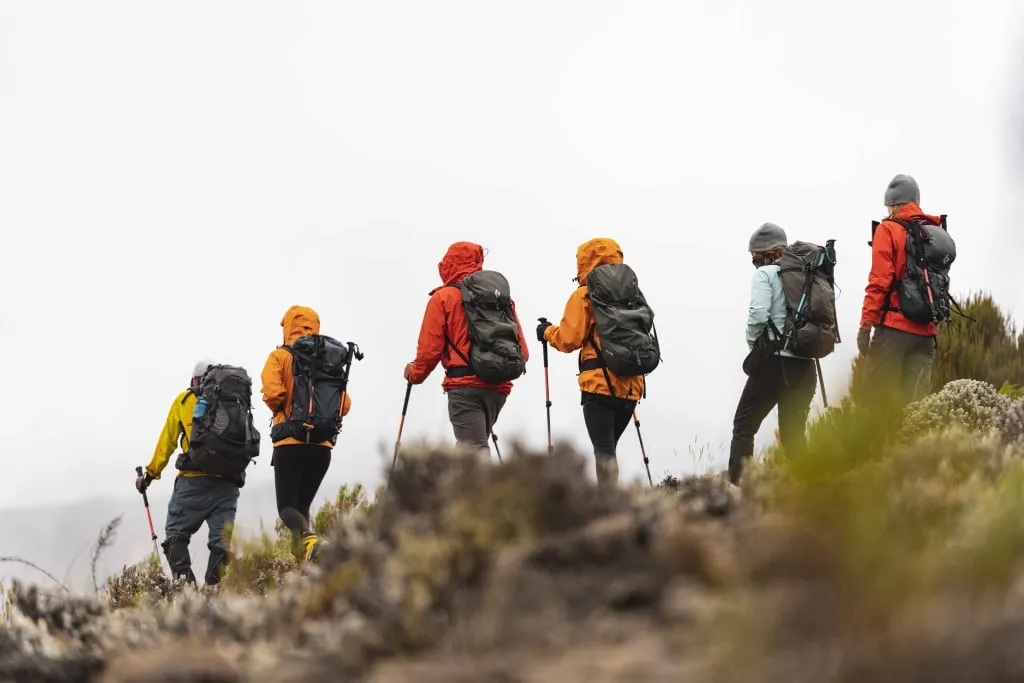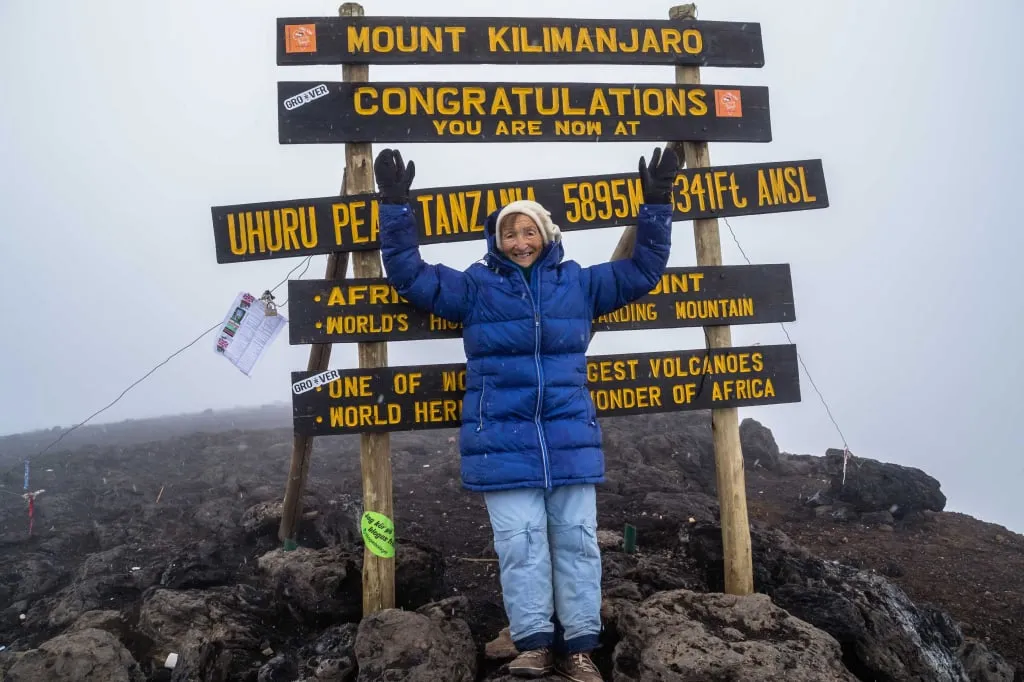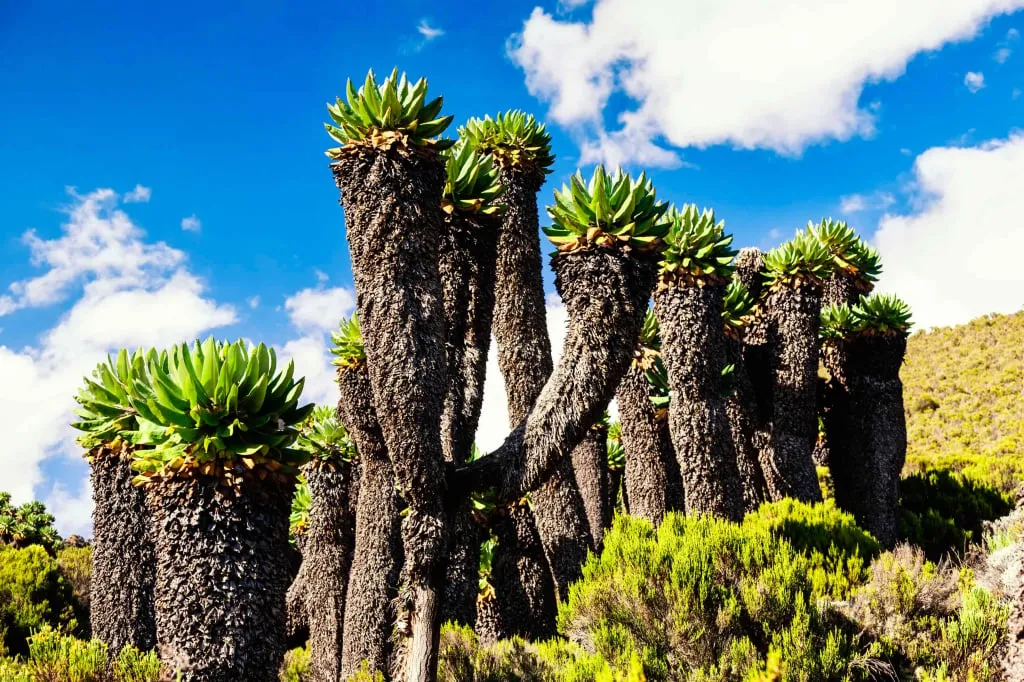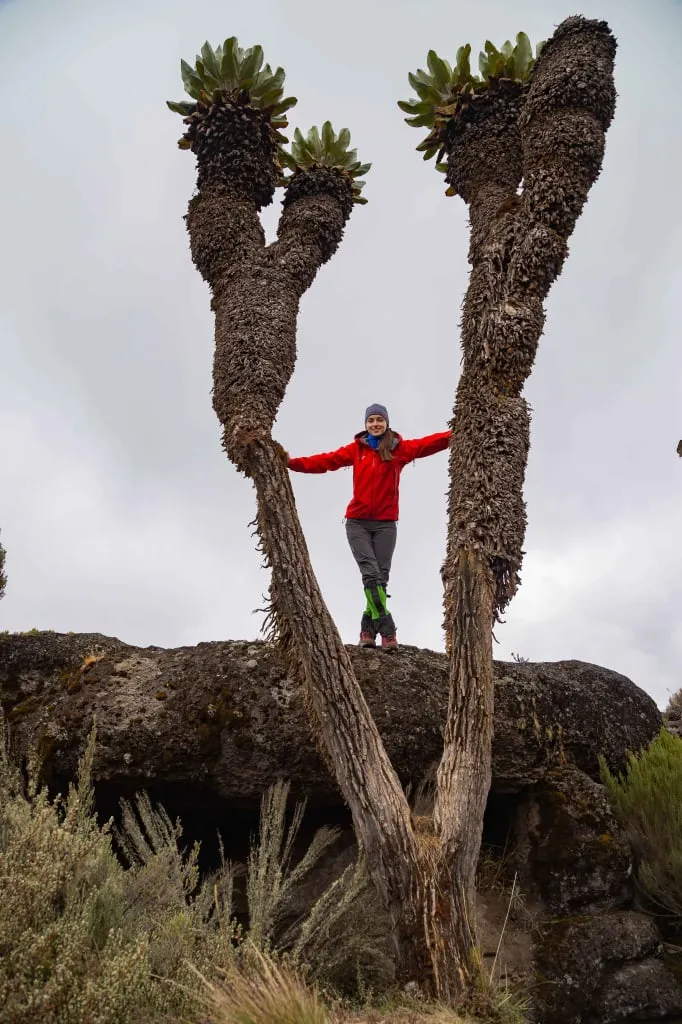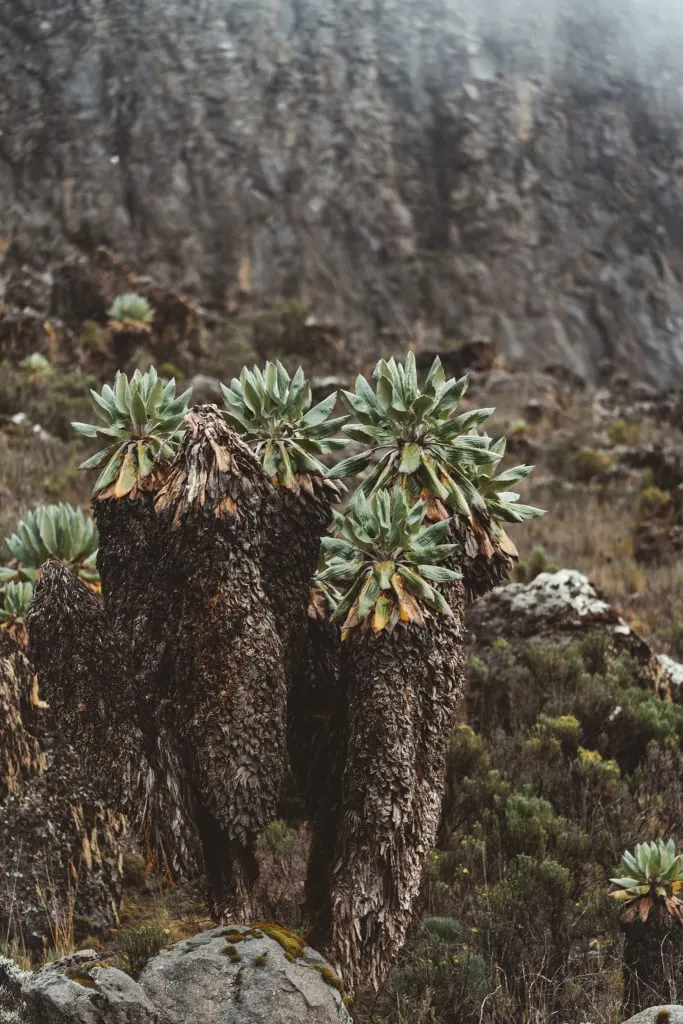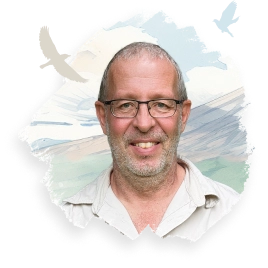Discover the fascinating facts about Mount Kilimanjaro, Africa's crown jewel and the tallest free-standing mountain in the world. Did you know that Kilimanjaro is not just one mountain, but a combination of three ancient volcanoes? Or that climbers typically spend 6-8 days ascending this majestic peak, but some record holders have completed the climb in as little as 6-8 hours? And that climbers have a variety of routes to choose from when embarking on their ascent? From unique plant life to breathtaking vistas, Kilimanjaro - the “Shining Mountain”, has plenty of surprises in store. This article will take you on a journey to explore the wonders of this iconic peak. Whether you're a seasoned climber or simply curious about nature's marvels, join us as we delve into the intriguing Mount Kilimanjaro facts, brought to you by Altezza Travel.
Fact 1: Kilimanjaro is one of the Seven Summits
The Seven Summits are the highest mountains on each of the seven continents. However, there's an interesting twist to the story. The list of these peaks actually includes nine mountains, not just seven. This is because the definition of continents and their boundaries can vary. First, let's take a closer look at Europe and Australia. In Europe, the debate over the main peak of the continent involves two famous mountains: the beautiful Mont Blanc in the Alps and the majestic Mount Elbrus in the Caucasus. When it comes to the question of where the border between Europe and Asia lies, different geologists, historians, and especially politicians have different answers. It all revolves around how the Caucasus Mountains, with Mount Elbrus as their centerpiece, are categorized.
In Australia, the situation is even more complicated. If we consider the continent in the traditional sense, its highest point would be Mount Kosciuszko in the Australian Alps. However, if we view Australia as a country, then its highest point would be Mawson Peak, a volcano located on Heard Island in the remote reaches of the Indian Ocean. Interestingly, this island is closer to Madagascar than to Australia itself. Geologically speaking, the highest point of the Australian tectonic plate is Puncak Jaya, also known as Carstensz Pyramid, located in Indonesia. The Dutch explorer Jan Carstensz first spotted this mountain in the 17th century, but his observation was ridiculed in Europe due to the claims of a glacier in the tropical region. Kilimanjaro, the African mountain, has a similar story. When the German explorer Johannes Rebmann reported a snow-capped mountain named Kilima-Njaro near the equator in the mid-19th century, his report was met with disbelief in Europe. However, there has never been any doubt about the height of this mountain, unlike Mount Kosciuszko, whose name was associated with different peaks depending on which one was considered the highest. Kilimanjaro has always held the distinction of being Africa's tallest mountain, securing its place among the Seven Summits.
Similar debates arise when identifying the main peaks in Asia, South America, North America, and Antarctica. Here's the complete list of the mountains that can make up the “Seven Summits”, listed in descending order of height:
- Everest (also known as Sagarmatha) in Asia, towering at 8,848 meters (29,029 feet), located in the Himalayas on the China-Nepal border.
- Aconcagua in South America, standing at 6,961 meters (22,837 feet), situated in the Andes Mountains within Argentina.
- Denali (also known as Mount McKinley) in North America, reaching a height of 6,190 meters (20,310 feet), located in the Alaska Range within the United States.
- Kilimanjaro's Kibo peak in Africa, standing tall at 5,895 meters (19,341 feet),situated in northern Tanzania
- Elbrus in Europe, reaching a height of 5,642 meters (18,510 feet), located in the Caucasus Mountains in Russia.
- Mont Blanc in Europe, standing at 4,810 meters (15,781 feet), situated in the Alps on the border of France and Italy.
- Vinson in Antarctica, soaring to 4,892 meters (16,050 feet), located in the Ellsworth Mountains, not belonging to any specific country.
- Mount Kosciuszko in Australia, located in the southern Great Dividing Range, standing at an elevation of 2,228 meters (7,310 feet).
- Puncak Jaya or Carstensz Pyramid in Oceania, reaching an elevation of 4,884 meters (16,024 feet) and located in the Maoke Range within the territory of Indonesia.
As you can see, the highest peak of Kilimanjaro is often referred to by its popular name, rather than its official name Kibo. It's important to note that Kilimanjaro is not just a single mountain but a massif composed of three volcanic peaks. It is another interesting fact about the “Roof of Africa”
Fact 2: Kilimanjaro is composed of three volcanoes
Many believe that Kilimanjaro is a single mountain with a snowy cap, majestically rising above the green savannah in the heart of Africa. The reality is somewhat more fascinating. Due to large-scale geological processes occurring beneath East Africa's surface millions of years ago, the Earth's crust in this very place experienced a lot of change.
Let's take a look at this gradual process from a planetary perspective. Beneath Africa lies a large lithospheric plate, on which the continent itself rests, as well as the waters of the surrounding oceans. This plate has been fracturing into pieces that move slowly away from each other. We can already observe how the Arabian Plate, carrying the Arabian Peninsula, broke away and collided with Eurasia, resulting in the formation of the Red Sea and mountain systems in Turkey and Iran. Now, the Somali Plate is also separating from the African Plate, moving eastward. Interestingly, in a few million years, East Africa will become an island and collide with the Arabian Peninsula. This process is known as rifting.
It is precisely this rifting that caused the formation of the three volcanoes of Kilimanjaro, as well as all the other volcanoes and mountain systems in the Great Rift Valley. The same process also gave rise to the Great African Lakes, including the deepest one, Lake Tanganyika.
First, magma erupted forming the Shira volcano over 2 million years ago. Today, very little remains of Shira. If you look at Kilimanjaro from the south, you can see the "shoulder" of the elongated mountain on the left. The crater has almost completely collapsed due to the appearance of the latest volcano, leaving only a short ridge of modest height. This collapsed crater is known as the Shira Plateau.
The second to emerge was the Mawenzi volcano. This occurred approximately 1 million years ago. The volcano erupted twice and then underwent erosion. Today, it is visible to the east of Kilimanjaro's center, with its crater consisting of eroded sharp peaks. It requires technical training and mountaineering equipment to climb.
All those who embark on the ascent to the summit of Kilimanjaro head towards , the summit of the youngest volcano, Mount Kibo. It formed just over half a million years ago and remains standing in the center of the mountain massif. It serves as Africa's iconic symbol, attracting tens of thousands of trekkers annually. Its last eruption occurred over 500 years ago.
On either side of these three main volcanoes are smaller crater formations, indicating magma eruptions in various directions and intense volcanic activity in Kilimanjaro's past. Traces of ejected volcanic rocks can be found over long distances, including near Lake Nyumba ya Mungu to the southeast of the mountain and in neighboring Kenya to the north.
Here are the heights of the main peaks of all three volcanoes of Kilimanjaro:
- Shira — about 3962 meters (13000 feet)
- Mawenzi — 5149 meters (16,893 feet)
- Kibo —5895 meters (19,341 feet).
Fact 3: There are several routes to the summit of Kili
While most tourists climbing the highest mountain on the planet, Mount Everest, can only ascend via two routes, there are several trails that lead to the summit of Mount Kilimanjaro. The most popular ones include six routes. Altezza Travel can guide you through any of those:
- Lemosho
- Marangu
- Rongai
- Machame
- Northern Traverse
- Umbwe
There are also other routes that are less popular or even dangerous, such as the Western Breach, where responsible companies do not take clients due to the difficulty and risk of such expeditions.
Marangu is one of the most popular routes among novice climbers. It is the only route where climbers sleep in wooden huts with minimal amenities instead of tents. This unique feature of Marangu has its downside - the route is constantly crowded, and the number of people that the huts in the camps can accommodate is limited. Its use is partially justified in rainy and windy weather, provided that sharing rooms with other people and sleeping on bunk beds does not bother you.
A climbing Kilimanjaro program via the Marangu route includes a minimum number of days necessary for acclimatization: 5 or 6 days in the mountains. Expeditions start from the eponymous gate of the national park, located on the outskirts of the legendary town of Moshi. It is a very cozy town that still preserves the memories of the 20th century and the legacy of both German and British influence.
It was along the path of this current route that the German climber Hans Meyer and the Austrian climber Ludwig Purtscheller became the first conquerors of Mount Kilimanjaro in 1889. Sometimes Marangu is referred to as the "Coca-Cola Route." This historical name is contrasted with the "Whiskey Route," which is traditionally used to refer to the Machame route.
Machame is one of the most beautiful routes, taking travelers through the tropical forest and all other climatic zones of the African mountain. This route lies west of Marangu and is also considered very popular. It starts from the eponymous gate located at the far end of the rural district bearing the same name as the route. Overnight stays on the Machame route, like on all subsequent routes, are in tents.
The Machame route provides climbers with a duration of 6 or 7 days to spend in the mountains. The number of days taken by expedition members depends on their level of experience and the strength of their acclimatization preparation. A longer itinerary allows for a more gradual adjustment to the altitude and ensures a smoother ascent.
Lemosho is one of the most interesting and picturesque routes on Mount Kilimanjaro. Its popularity started relatively recently, but it seems destined to become the most popular among all paths to Uhuru. It begins at the western gate of Londorossi and crosses the expanses of the Shira Plateau, an open panoramic area where the first of the three volcanoes of Mount Kilimanjaro once stood.
Lemosho follows a route away from the crowded southeast routes, which is appreciated by those who want to avoid congestion both on the trail and in the tented camps. This colorful route involves an initial high-altitude drop-off at 3,500 meters (11482 feet), which is later compensated by a multi-day and well-thought-out acclimatization program lasting 6, 7, or even 8 days in the mountains.
Rongai is one of the unique routes that traverses the northern slope of Mount Kilimanjaro. This path begins at the Nalemuru gate and offers climbers the opportunity to witness not only Tanzania, where the legendary volcano stands, but also the neighboring country of Kenya, with its famous Amboseli National Park, from a significant height.
Rongai takes climbers through the plateau between the two remaining volcanoes of Kilimanjaro, Mawenzi and Kibo. It is the only route that entirely passes through the mountain's northern slope. One distinctive feature of this route is the scarcity of precipitation on the northern side of Kilimanjaro, allowing climbers to enjoy mostly rain-free weather, even during the wet seasons when tourists on other routes have to endure the hardships of rough weather at high altitudes.
The Northern Traverse is a route that elegantly encircles Kilimanjaro from its northern side, as the name suggests. It is the longest route, spanning 8 days of mountaineering. It commences at the same Londorossi gate on the western side as the Lemosho route, then takes climbers through challenging yet captivating sections of the mountain's northern slope, eventually leading them to the high camp on the eastern side of the volcano. Thus, travelers following this route get to experience Kilimanjaro from three different sides.
The Northern Traverse offers an exciting journey with magnificent views, a well-designed acclimatization program, and fewer climbers encountered along the entire path. It is the most expensive route, but undoubtedly worth the investment. If there is anything that can make this route even more impressive, it would be descending into the Kibo crater and spending a magical night in the ancient caldera, under a canopy of stars in the equatorial sky.
Lastly, Umbwe is one of the shortest routes, leading directly from the gate of the same name to the peak of Uhuru. It is a 6-day mountain journey primarily chosen by experienced mountaineers and extreme sports enthusiasts aiming to establish records or conquer ice fields and attempt technical ascents on Mawenzi. We will discuss some of those records later in the article.
In certain exceptional circumstances, such as when aiming to establish particular records or when climbers undertake the challenge of climbing glaciers or Mawenzi, alternative routes that incorporate more than half of the main routes' sections may be chosen. Additionally, there is an extreme route called the Western Breach, which navigates through rockslides created by the collapse of a lava wall. This area is prone to frequent rockfalls, and tragically, climbers lose their lives there every few years. It's important to note that this route is not commercially accessible.
Fact 4: Kili is the tallest freestanding mountain in the world
Upon reaching the summit of Mount Kilimanjaro, you'll come across a sign that proudly states that you are not only standing at the highest point in Africa but also on the tallest freestanding mountain in the world. And this claim is entirely justified.
Three volcanoes form a unified mountain massif, technically making them a single mountain. Indeed, there are no other mountains or mountain ranges for many kilometers around. Rising above the savannas of Tanzania and Kenya, this massive complex measures 45 by 90 kilometers (28 by 56 miles). Thus, Africa's greatest pride and a UNESCO World Heritage Site hold the distinction of being the tallest freestanding mountain in the world. However, there's an important caveat: this record excludes underwater mountains.
If we consider the entire solid surface of the Earth, the title of the tallest freestanding mountain would go to Mauna Kea in Hawaii. In fact, it surpasses even Mount Everest, with its elevation of 8,848 meters (29,031 feet) above sea level when measured from its base. Mauna Kea's full height is 10,203 meters (33,500 feet). However, following the more conventional measurement scheme, Mauna Kea's elevation is 4,207 meters (13,796 feet) above sea level.
There's another interesting connection between Kilimanjaro and Mauna Kea. Several days a year, the peak of the Hawaiian volcano turns white due to snowfall. In the Hawaiian language, the volcano's name means "White Mountain." While the origin of Kilimanjaro's name remains a mystery, the primary theory suggests a similar reason for the name “Shining Mountain”.
Fact 5: The name of the mountain remains a puzzle
The most common theory regarding the origin of the mountain's name states that it consists of two words in Swahili that mean the "Shining Mountain." This refers to the snow that glistens on the summit under the sunlight. However, if we delve into the etymology of the word, we find some inaccuracies and a certain stretching of facts. This can be explained by the misunderstanding of the local residents' language by European explorers and the fact that the people inhabiting this region of Africa speak not only Swahili but also their own local languages. For instance, in present-day Tanzania, there are more than 120 languages being spoken. It is possible that words from various languages found their way into the name of the mountain, not just from Swahili.
The Chaga people, who traditionally inhabit the lands south of Kilimanjaro, speak the Chaga language. One version of the Kilimanjaro name's breakdown in Chaga suggests that it consists of the words "kilelema" and "njaare," which, when combined, can mean "impossible for a bird." This likely refers to the mountain's height. However, this version contradicts the fact that the Chaga people perceive Kilimanjaro not as a single mountain but as two separate ones, each with its own name.
On the other hand, the names of both peaks, Kibo and Mawenzi, are much clearer. The name "Kibo" derives from the Chaga word "kipoo," which means "spotted" and refers to the mottled dark rocks against the backdrop of white snow. "Mawenzi," on the other hand, comes from "kimawenze" in Chaga, which means "broken" or "jagged," describing the external shape of the mountain with its rugged summit. There are also versions associated with the words "leopard" and "caravan" in the Chaga language, which could have been indicative of ivory and slave traders who traveled in caravans from the interior of the continent to the coast. However, these versions do not align with the fact that the Chaga people neither have nor have ever had a unified name for the mountain.
There is also a version suggesting that the second part of the name traces back to the Maasai language . In this case, the words "ngaro" or "ngare," meaning "water" or "source," could have been misinterpreted by Europeans as "Kilimanjaro." There was a belief that the second part of the word could refer to the spirits inhabiting the mountain, freezing anyone who attempted to climb it. However, this belief was more prevalent among the inhabitants of distant coasts rather than those living at the foot of the mountain. Therefore, this version appears doubtful as well.
Some researchers have proposed breaking down the mountain's name not into the traditional "kilima" and "ndjaro" but in a different way, leading to new interpretations. However, this seems to further complicate matters. In conclusion, why we call it Kilimanjaro exactly remains a question that hasn't been fully clarified. One thing is certain, though: ascending Kilimanjaro is potentially achievable for any healthy person, and it doesn't require anything extraordinary.
Fact 6: Climbing Mount Kilimanjaro does not require mountaineering equipment
Reaching the summit of Mount Kilimanjaro is possible for anyone who is determined, healthy, and willing to follow professional advice. Special training or extraordinary physical attributes are not necessary for participating in the climb. What's even more pleasing to know for those considering conquering the 5895-meter (19,341-foot) mountain is that you won't need any specialized footwear, ropes, ice axes, or other intricate gear used by climbers scaling sheer cliffs, glaciers, and sharp rocky peaks. No mountaineering equipment is required!
All you need in terms of equipment is proper clothing, reliable footwear, trekking poles, and a few personal items like a thermos and a waterproof bag for gadgets. If you plan to embark on the mountain trek with Altezza Travel and find yourself missing any gear, there's no need to worry. We have you covered. You'll be able to rent any item from our warehouse located at the foot of Mount Kilimanjaro. You can review the equipment list
for the "Roof of Africa" expedition in advance. Take a look and realize that it doesn't include any professional mountaineering gear.
However, this doesn't mean that climbing Mount Kilimanjaro requires little effort. It simply means that your chances of reaching its summit are significantly higher compared to, for example, peaks in the Himalayas.
 Get PDF
Get PDF
Fact 7: The longer your climbing itinerary is, the more likely you are to successfully ascent the summit
The popularity of Mount Kilimanjaro is continuously growing, attracting more and more people to test their abilities in conquering one of the world's most famous mountains. Each year, around 50,000 individuals visit Tanzania for this purpose, excluding a couple of years when global travel was significantly reduced due to the COVID-19 pandemic. Despite the influx of tourists, there is no comprehensive and up-to-date statistical data on the success rates of Kilimanjaro climbs.
Different commercial companies have their own calculations, and at Altezza Travel, after a decade of experience, we have accumulated our own data, allowing us to draw a general conclusion. The official data from the Kilimanjaro National Park management is limited to figures from 15 years ago. A significant drawback is that during that time, there were many expeditions with shorter durations of 5 to 6 days. However, the main factor influencing the success of the climb is its duration. The longer the group spends in the mountains, the better the acclimatization of its members, resulting in higher chances of successfully reaching the summit in most cases. It is worth noting that the average duration of expeditions has increased over the past 15 years.
If we rely on the outdated figures from the national park administration, the success rates are as follows:
- 64% successful summit rate for 7-day routes
- 85% successful summit rate for 8-day routes
The success rate of ascents on the 7-day Lemosho route for Altezza Travel clients is currently 93.9%. You can rely on this figure when choosing us as your mountain operator and opting for this optimal program. It's worth noting that the 7-day Lemosho route is the most successful in our extensive experience, with a slightly higher success rate even compared to the same route over 8 days. So, make sure to allocate an adequate number of days for conquering Kilimanjaro unless you're aiming for a speed record in skyrunning.
Fact 8: The fastest ascents of Mount Kilimanjaro took just hours
The current record for the fastest ascent to the summit of Mount Kilimanjaro is held by Karl Egloff, who completed the climb in 4 hours and 56 minutes in 2014. He achieved this using the Umbwe route, which we mentioned earlier as the shortest and most convenient route for setting records. The skyrunner started the run via Umbwe and, at the Barranco camp, turned towards the Western Breach, ascending the summit through this challenging section.
One of the previous records belonged (and possibly still belongs) to Simon Mtuy from Tanzania, who completed the entire round trip on the same Umbwe route in 9 hours and 19 minutes. What sets his record apart is that he didn't receive any assistance from others, carrying his own water, food, and clothing. This record was set in 2006.
When it comes to the fastest ascent of Kilimanjaro by a woman, the record is held by Anne-Marie Flammersfeld from Switzerland, who reached the peak in 8 hours and 32 minutes. She followed the same Umbwe route and descended via the traditional Mweka route. This record was set in 2015 when she was 37 years old. By the way, the age of climbers is another unofficial competition category on Kilimanjaro.
Fact 9: Kilimanjaro was conquered by an 89-year-old woman
In 2015, Anne Lorimor from the United States successfully climbed the summit of Africa's highest mountain at the age of 85. However, her record lasted only a few months as in the same year, Russian climber Angela Vorobyeva, aged 86, reached the peak . By the way, Angela Vorobyeva climbed with Altezza Travel and followed the Lemosho route.
In 2017, Fred Distelhorst from the United States ascended Kilimanjaro at the age of 88, setting a new record and inspiring many people to conquer the snowy mountain near the equator.
However, the American lady was not willing to give up without a fight, and in 2019, she managed to repeat her success. At the age of 89, Anne Lorimor became the holder of a new record that still stands today. It is worth noting that both Americans used supplemental oxygen during their summit push, while the Russian climber accomplished the feat on her own, making her the oldest person to climb Kilimanjaro without the use of bottled oxygen.
Fact 10: Kilimanjaro is home to many unique plants
Another interesting fact about the main African mountain is that it is home to plants that cannot be found anywhere else. The flora of Kilimanjaro is very rich, with up to 2,500 species of plants. This diversity is attributed to several factors: proximity to the equator, the mountain's altitude, and warm winds blowing from the Indian Ocean.
There are several species that are unique to this region, known as endemic plants. The most impressive among them is perhaps the Dendrosenecio kilimanjari. This massive groundsel has a powerful trunk and peculiar branches, earning it the nickname "giant candelabra". All similar groundsels grow only in East Africa. There are about 10 species and subspecies, each with distinct characteristics and scattered across different mountain systems in the region. For example, there is a species specific to the Rwenzori and Virunga mountains, several species in the Aberdare Range and Mount Kenya, a species on Mount Elgon, and a unique species growing on Mount Meru and other elevated areas.
All those species had a common ancestor, but subsequently the plants somehow managed to spread across different mountains of East Africa and develop independently within closed high-altitude ecosystems. They all grow exclusively in the Afro-alpine zone, at an altitude of approximately 2,800 to 4,500 meters (9,186 to 14,764 feet) above sea level.
Dendrosenecio kilimanjari reaches a height of 10 meters (32 feet), with a thick, unbranched trunk and a crown of 30-120 leaf rosettes at the top. Groundsels grow at a rate of 3-5.5 cm (1.2-2.2 inches) per year, suggesting that the tallest plants are approximately 250 years old!
The plant stores water in its stem, allowing it to survive dry periods. The adaptations of these groundsels to life at high altitudes are fascinating. Apart from their enormous size, which enables the groundsels to rise above the towering heather of the high-altitude Afro-alpine meadows and win the competition for sunlight, it possesses other adaptive features. These include the ability of its leaves to close into a nighttime bud when it becomes too cold, the capacity to accumulate polysaccharide fluids inside, forming ice crystals (a natural antifreeze), and thermal insulation of the trunk through dead leaves, similar to palm-like plants.
And yet, the most astonishing fact about the East African giant groundsels is that all species originated from a single ancestor that appeared on Mount Kilimanjaro approximately one million years ago. Currently, there are two subspecies of giant groundsels on the mountain: Dendrosenecio kilimanjari and Dendrosenecio johnstonii. All the other species are descendants of the original Kilimanjaro groundsel and evolved in isolation on other mountains in the region. The exact process of how they colonized such distant mountains from Kilimanjaro remains a mystery to scientists.
If you're eager to see the incredible sights we've shared in this article, just give us a shout! We're here to help you plan an amazing trip to Africa's tallest mountain. Get ready for an adventure like no other as you explore the breathtaking heights of Mount Kilimanjaro. Contact us now and let's start planning your epic expedition to the highest peak in Africa!












